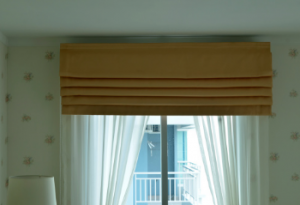Before you purchase window blinds, you should know that they come in various types. Each type uses a different type of control system. This article will discuss some common types of window coverings and the types of fabrics available, and we’ll also cover the operation and insulation of roman blinds. Read on to learn more about the many options available for your home! Many different types of window blinds, including wooden and faux wood, are available in different price ranges.
 Variations of roman blinds
Variations of roman blinds
You can choose between inside-mount and outside-mount roman blinds Adelaide to achieve the desired look and function. Inside-mount roman blinds are usually flatter and more fitted to the window frame, whereas outside-mount roman blinds are thicker and more fitted to the window frame. Each type has advantages and disadvantages, so knowing which will work best for your home is essential. Here are some tips to keep in mind to make the selection process easier.
The first thing to consider when choosing your window coverings is how much light you’d like to block. A standard white light shade is the most appropriate for most rooms, as it will allow plenty of light to enter. Thermal sateen white light shades can prevent air from escaping the room while allowing light to filter through. Room-darkening shades are made from heavier fabric and block out a large portion of sunlight.
Fabric choices
Fabric choices for roman blinds can vary from light and airy to luxurious and extravagant. You may prefer a light and airy colour to draw attention to your windows or a darker one to create a bold and dramatic statement. The colour of your fabric should match the general decor of your room. For a bold statement, go for textured fabrics, although patterned fabrics can get damaged with regular operation. Here are some tips for selecting the suitable fabric for your blinds.
Looped Roman shades have folds or pleats on the front side, whereas seamed styles are flat and smooth and work best with solid colours and smaller patterns. Looped and seamed styles are available in corded and cordless configurations, each with pros and cons. The fold style is also available in various colours, patterns, and textures, making them versatile for any room.
Operation
Regarding design, roman blinds can work with any window. Their lower parts can be left straight or decorated with tassels, bows, and ruffles. Depending on the fabric and style of the room, roman blinds can be used in a neutral, sophisticated, or dramatic way. Double or triple roman blinds may be necessary if the windows are expansive. These window coverings have numerous options for decoration, including different materials and textures.
Insulation
The basic principle of insulating window shades is using layers of fabric. A vapour barrier is placed in the centre, and layers of fiberfill are inserted between them. Each layer is about half an inch wider than the window’s frame and is slid inside to create a snug fit. Insulated Roman shades may have one to three layers of fiberfill and are typically made with pre-layered fabrics. These materials may also include a water-resistant liner, fibre, metalized film, and a vapour barrier.
When selecting insulating window blinds, it is crucial to consider their style. There are many different styles of window blinds available. Cellular shades, for example, feature a series of hexagons stacked vertically, each connected to the top side of another hexagon. When you pull one of these blinds in, the two sides collapse, letting in air from the sides and keeping the room cool. The inside mount is usually the most attractive option.
Cost
If you are looking for new window coverings, one of the most popular styles is roman blinds. These blinds feature a fabric casing and fold themselves when pulled up by a cord. Their cost ranges from $30 to $120 per blind. A typical homeowner spends between $875 and $2,600 on custom shades. While roman blinds are not the most expensive window coverings, they can be more expensive than roller shades.